Nature Reserve and National Park Day has been celebrated in Russian on January 11 since 1997. On this day 98 years ago, the first Russian nature reserve was created. Sputnik invites you to take a look at some of Russia’s most picturesque nature reserves.
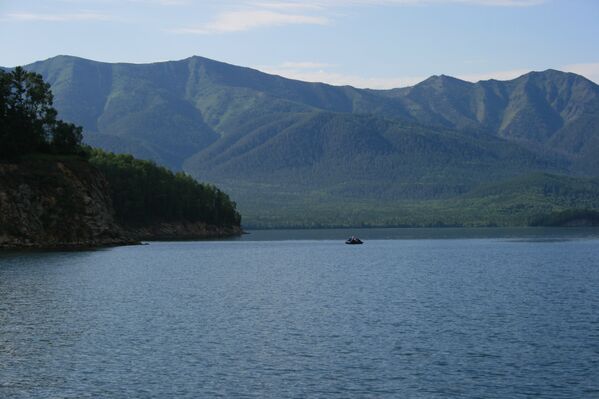
The Barguzinsky Nature Reserve is the oldest of Russia’s nature reserves. It is located in Buryatia on the west slope of the Barguzin Range, including the northeast shores of Lake Baikal. The reserve covers an area of 2,482 square kilometers.
Above: Baikal. Zmeinaya buhta. Barguzinsky Nature Reserve.
Above: Baikal. Zmeinaya buhta. Barguzinsky Nature Reserve.
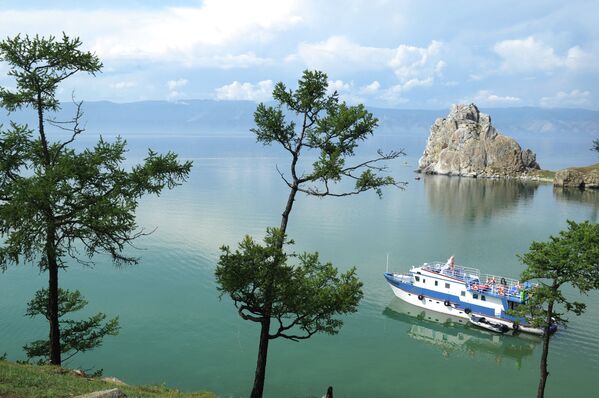
The Barguzinsky Reserve was created on January 11, 1917 to preserve and increase the numbers of Barguzin Sable. Mountainous and taiga landscapes are also being preserved. In 1986, UNESCO designated it as a biosphere reserve. Now it is proclaimed a World Heritage Site by UNESCO.
Above: A ship sailing on Lake Baikal near Olkhon island.
Above: A ship sailing on Lake Baikal near Olkhon island.
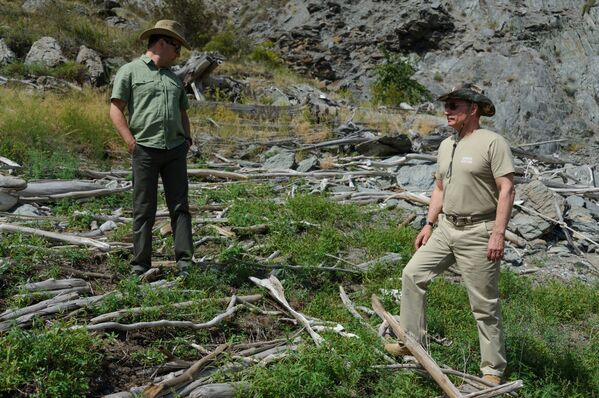
There are more than 103 nature reserves, 47 national parks and 68 federal protected territories (sanctuaries in UNESCO terms) with a total area of nearly 203 million hectares in Russia.
Above: July 21, 2013. Russian President Vladimir Putin, right, and Russian Prime Minister Dmitry Medvedev visit Sayano-Shushenskiy State Biospheric Nature Reserve.
Above: July 21, 2013. Russian President Vladimir Putin, right, and Russian Prime Minister Dmitry Medvedev visit Sayano-Shushenskiy State Biospheric Nature Reserve.
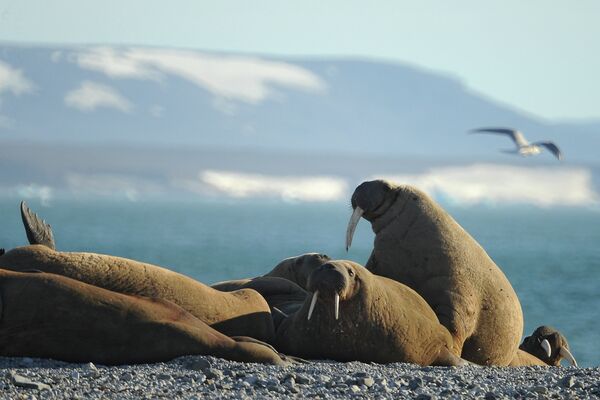
The Russian Arctic National Park was established in June, 2009. It covers a large and remote area of the Arctic Ocean, the northern part of Novaya Zemlya and Franz Joseph Island. The area is the habitat of polar bears and bowhead whales. It also includes large bird colonies, as well as walrus and seal rookeries.
Above: A walrus rookery in the Russian Arctic National Park. Oransky Islands. Novaya Zemlya Archipelago.
Above: A walrus rookery in the Russian Arctic National Park. Oransky Islands. Novaya Zemlya Archipelago.
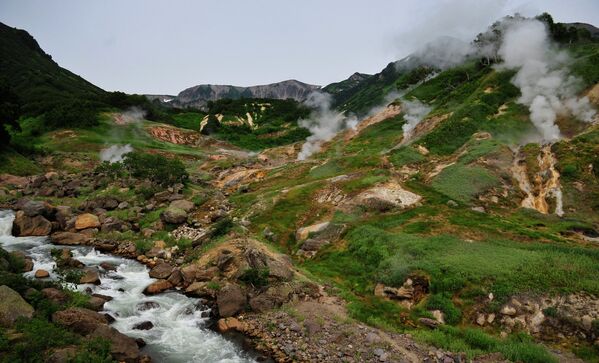
The Kronotsky Nature Reserve was created in 1934, in Russia’s Far East, on the coast of the Kamchatka Peninsula. Its boundaries contain an area of 10,990 square kilometers. It has Russia’s only geyser basin and several mountain ranges with volcanoes.
Above: The Valley of Geysers, Kronotsky Nature Biosphere Reserve, Kamchatka Peninsula.
Above: The Valley of Geysers, Kronotsky Nature Biosphere Reserve, Kamchatka Peninsula.
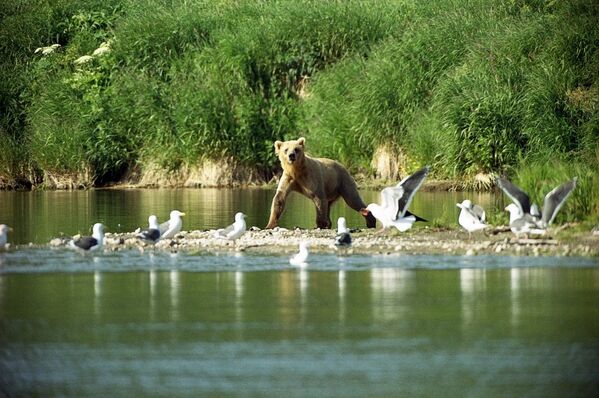
6/16
© East News / Andriy Kotliarchuk
The Kronotsky Reserve has a population of more than 800 brown bears, some of the largest in the world that can grow to over 540 kilograms.
Above: A glaucous-winged gull steals a salmon from a brown bear. Kronotsky Nature Biosphere Reserve, Kamchatka Peninsula.
Above: A glaucous-winged gull steals a salmon from a brown bear. Kronotsky Nature Biosphere Reserve, Kamchatka Peninsula.
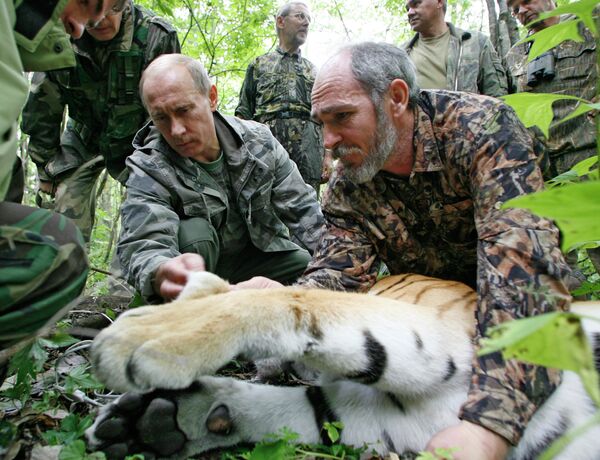
The Ussuri Reserve was initially established on August 7, 1934 as Suputinsky Reserve, and was renamed in 1974. The reserve hosts several endangered species, including Amur tigers.
Above: August 31, 2008. Vladimir Putin as Russian Prime Minister (L), and Senior Researcher of the Ecology and Evolution Problems Institute of the Russian Academy of Sciences Viktor Lukaretsky looking over a five year-old tigress in the Ussuri Reserve.
Above: August 31, 2008. Vladimir Putin as Russian Prime Minister (L), and Senior Researcher of the Ecology and Evolution Problems Institute of the Russian Academy of Sciences Viktor Lukaretsky looking over a five year-old tigress in the Ussuri Reserve.
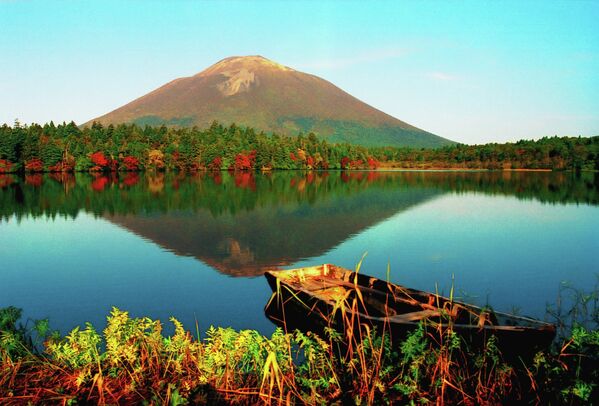
The Kurilsky Nature Reserve was created on February 10, 1984 on Kunashiri Island and Lesser Kuril Ridge. The area has a number of unique natural and cultural objects.
Above: The nature of the Kuril Islands.
Above: The nature of the Kuril Islands.

The Stolby Nature Sanctuary is located on the northwestern spurs of the Eastern Sayan and borders upon Krasnoyarsk city from the northeast. The park was founded in 1925. It is a candidate to the list of UNESCO World Heritage Sites.
Above: A torchbearer during the Olympic torch relay at the Stolby State Nature Reserve in Krasnoyarsk.
Above: A torchbearer during the Olympic torch relay at the Stolby State Nature Reserve in Krasnoyarsk.

10/16
© East News / AP Photo/The Zoological Society of London
The Lazovsky Nature Reserve is the second-largest reserve in the Primorsky Territory. It was created in 1935. The reserve covers an area of more than 120,000 hectares and includes a wide range of plants and animals.
Above: A golden eagle attacks a deer at the Lazovsky State Nature Reserve.
Above: A golden eagle attacks a deer at the Lazovsky State Nature Reserve.
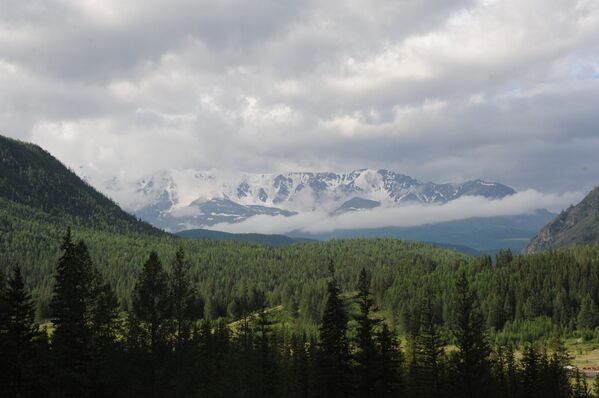
The Altai State Nature Reserve is situated in the mountains of South Siberia. It was founded on October 7, 1967. It was put on the UNESCO World Heritage Site as a part of the Golden Mountains of Altai.
Above: Mountains in the Kosh-Agach district, Altai Republic.
Above: Mountains in the Kosh-Agach district, Altai Republic.

The Kursh Spit National Park is located in the Kaliningrad Region and borders Lithuania. It is the smallest national park in Russia. It was established in 1987. Every year, it attracts hundreds of thousands of tourists.
Above: Inhabitants of the Kursh Spit Nature Reserve, Kaliningrad region.
Above: Inhabitants of the Kursh Spit Nature Reserve, Kaliningrad region.
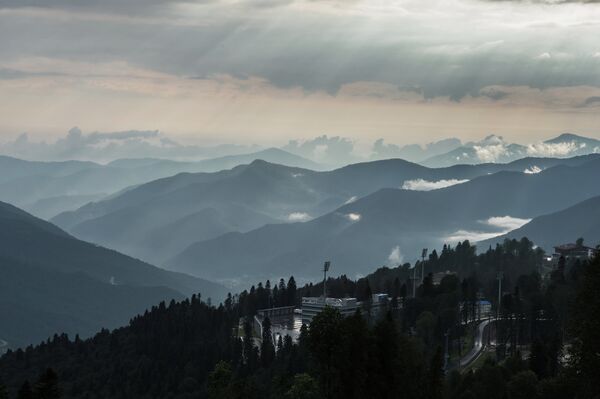
The Caucasian State Biosphere Nature Reserve is situated in three Russian regions – Krasnodarsky Territory, the Republic of Adygea and the Karachay–Cherkess Republic. The reserve covers an area of over 280,000 hectares. In 1999, it was declared a UNESCO World Heritage Site.
Above: Gazprom mountain-tourist center in the Caucasian State Biosphere Nature Reserve.
Above: Gazprom mountain-tourist center in the Caucasian State Biosphere Nature Reserve.
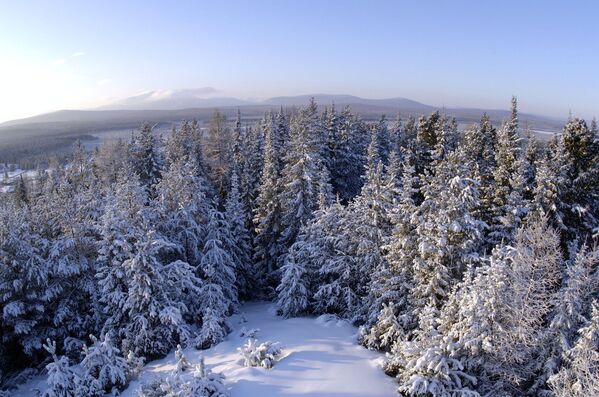
14/16
© East News
The Denezhkin Kamen Nature Reserve is a reserve in Sverdlovsk region. It was created in 1946. Its area has changed several times throughout its history. Now it covers an area of 78,000 hectares.
Above: Russia, midwinter, December. The view is towards the Denezhkin Kamen State Nature Reserve.
Above: Russia, midwinter, December. The view is towards the Denezhkin Kamen State Nature Reserve.
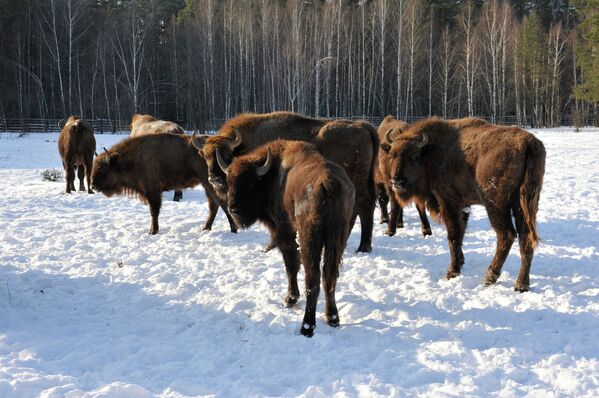
The Bryansky Les (Bryansk Forest) Nature Reserve was established in July, 1987 in the Bryansk region. In 2001, UNESCO designated it as a biosphere reserve. Bryansky Les is the only European location inhabited by all ten species of European woodpeckers.
Above: Wisents at the Bryansky Les Nature Reserve.
Above: Wisents at the Bryansky Les Nature Reserve.
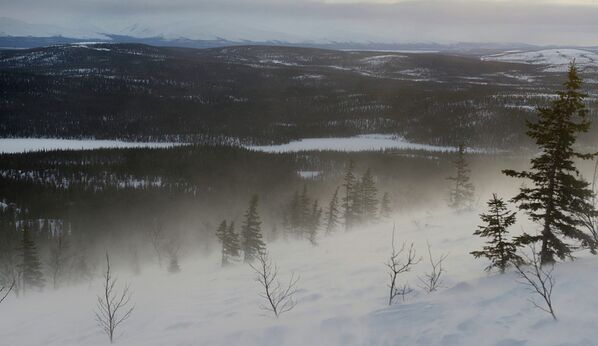
Lapland Biosphere Reserve is located in Murmansk region, beyond the Arctic Circle. It occupies an area of 2,784 square kilometers. The Lapland Nature Reserve was created in 1930. Since 1985 it has been designated by UNESCO as a biosphere reserve.
Above: A view of the Lapland Biosphere Reserve.
Above: A view of the Lapland Biosphere Reserve.

